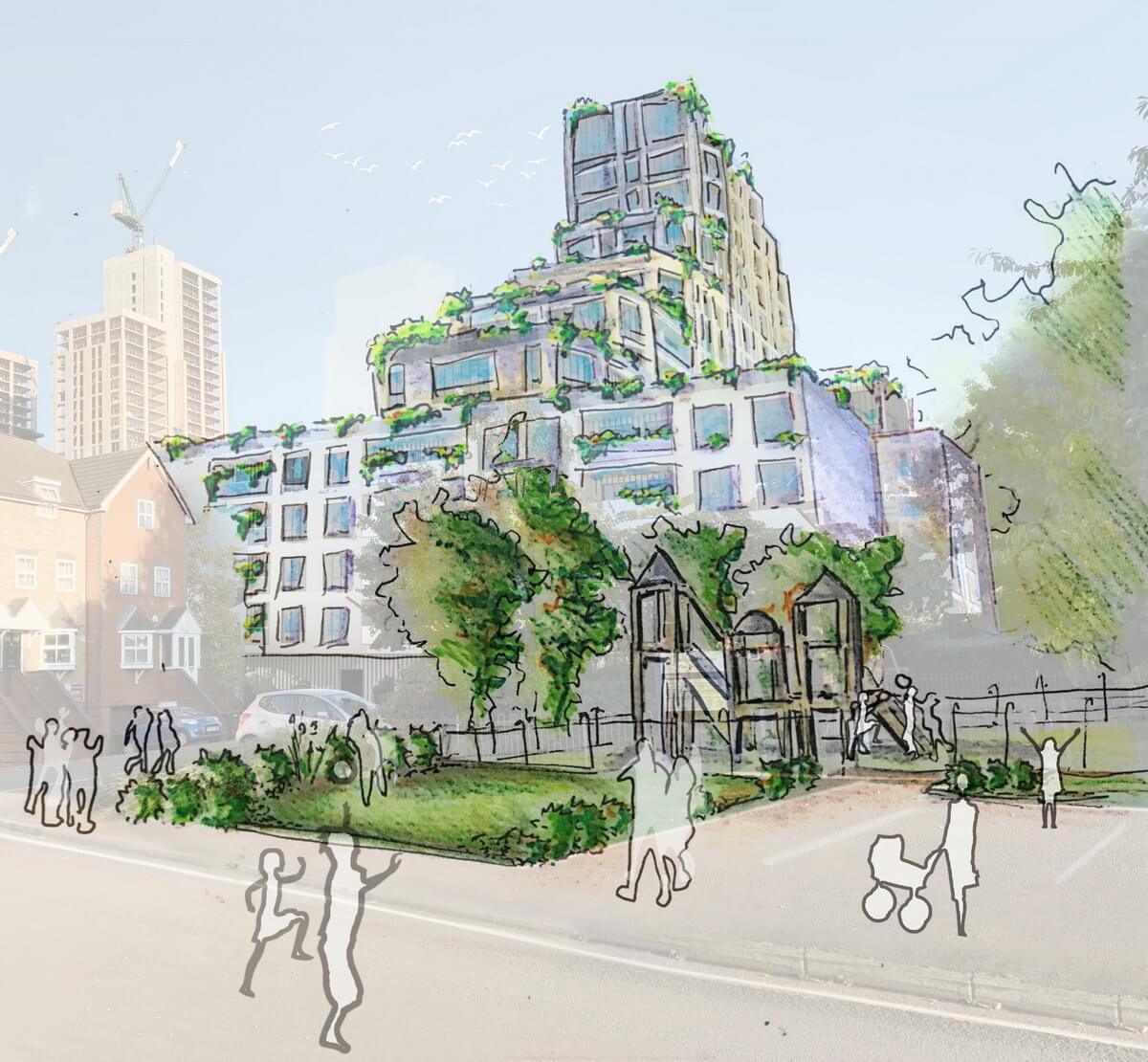Green and Mindful Architecture

No matter how you consume your news the threat of the current climate crisis is unavoidable. The discussion of this issue ranges from the global economy’s green recovery, following the Coronavirus pandemic (1), to how individuals can save bees (and therefore the world’s ecosystems) (2) from extinction.
Architecture has a significant part to play in the world’s green recovery. In fact, in 2017 it was noted that building and construction are responsible for 39% of all carbon emissions in the world(3).
While in 2019, the World Green Building Council stated the building and construction sector can reach net zero carbon emissions by 2050, with a warning that targets cannot be reached unless there is a significant shift in how the industry collaborates to change the market. (4)
Similarly in 2019, the Royal Institute of British Architects (RIBA) set out its 2030 Climate Challenge. This set of targets features a call to action for chartered businesses to see a fall in operational energy demand by at least 75% and reduce embodied carbon by a minimum of 50-70% (both before UK offsetting and as soon as possible). (5)
The RIBA challenge also includes a call for practices to decrease potable water use by 40% within their construction projects. Other critical points include reducing the use of toxic building materials which can often raise ethical and environmental problems (6).
Additionally, finding the balance between well insulated and well ventilated buildings is a critical point. Then there are the problems raised by a changing climate, such as the increased need for flood resilient buildings(7). The issues listed are just the tip of the iceberg when it comes to tackling the climate crisis in the construction and property business.
So, creating sustainable designs can mean more expensive and time-consuming construction and application processes, which stakeholders are not always willing to commit to. How do we make green design viable for investors and other stakeholders when sustainable building practices are often seen as an expensive luxury rather than as an absolute necessity?
The evolution towards environmentally oriented architecture and the innovation this involves is what we envision as mindful design: creating a culture that looks past initial financial costs and instead focuses on social values and green design strategies.
A more mindful design can have mental health benefits while helping to preserve the planet, incorporating requirements for sustainability and cultural enhancements. After all, there is a well proven positive relationship between living or working in a nicely designed, eco-conscious environment and our mental health. As a result, we aspire to explore different ways to implement green and mindful design practices.
By Aara Syed in collaboration with Aqua Architecture
1.
https://www.forbes.com/sites/mikescott/2020/10/21/a-green-recovery-is-best-way-to-bounce-back-from-covid-19/
2.
https://www.un.org/en/observances/bee-day
3.
https://www.iea.org/reports/global-status-report-for-buildings-and-construction-2019
4.
https://www.worldgbc.org/news-media/WorldGBC-embodied-carbon-report-published
5.
https://www.architecture.com/-/media/files/Climate-action/RIBA-2030-Climate-Challenge.pdf?la=en
6. Bandow, N., Gartiser, S., Ilvonen, O. et al. Evaluation of the impact of construction products
on the environment by leaching of possibly hazardous substances. Environ Sci Eur 30, 14
(2018). https://doi.org/10.1186/s12302-018-0144-2
7.
https://www.ft.com/content/a170fca6-f767-11e9-a79c-bc9acae3b654

